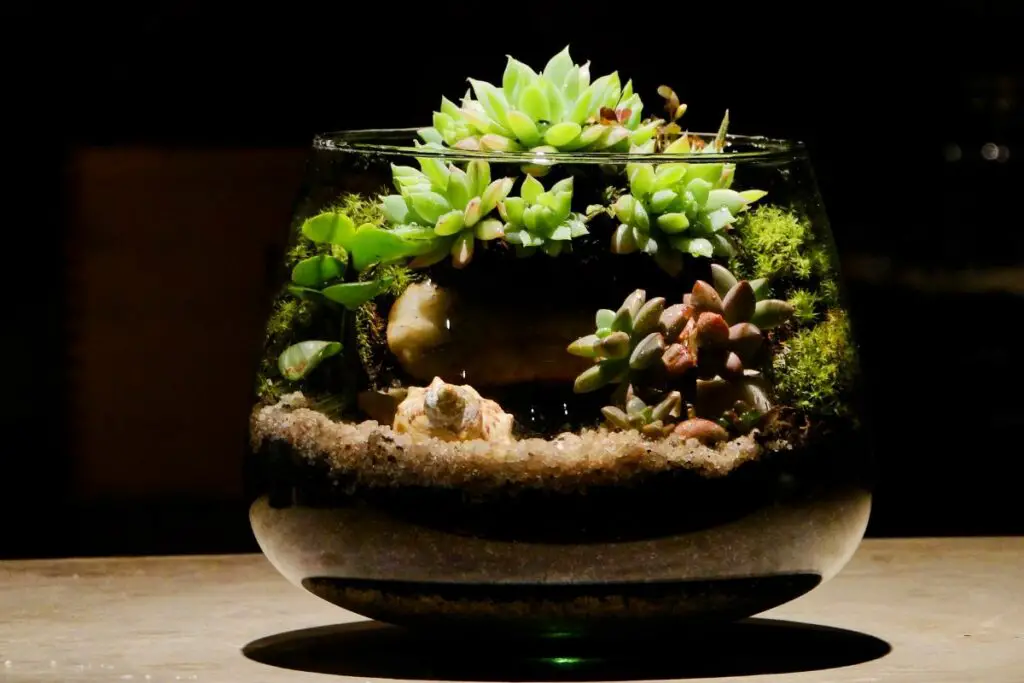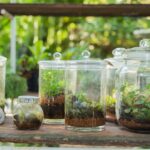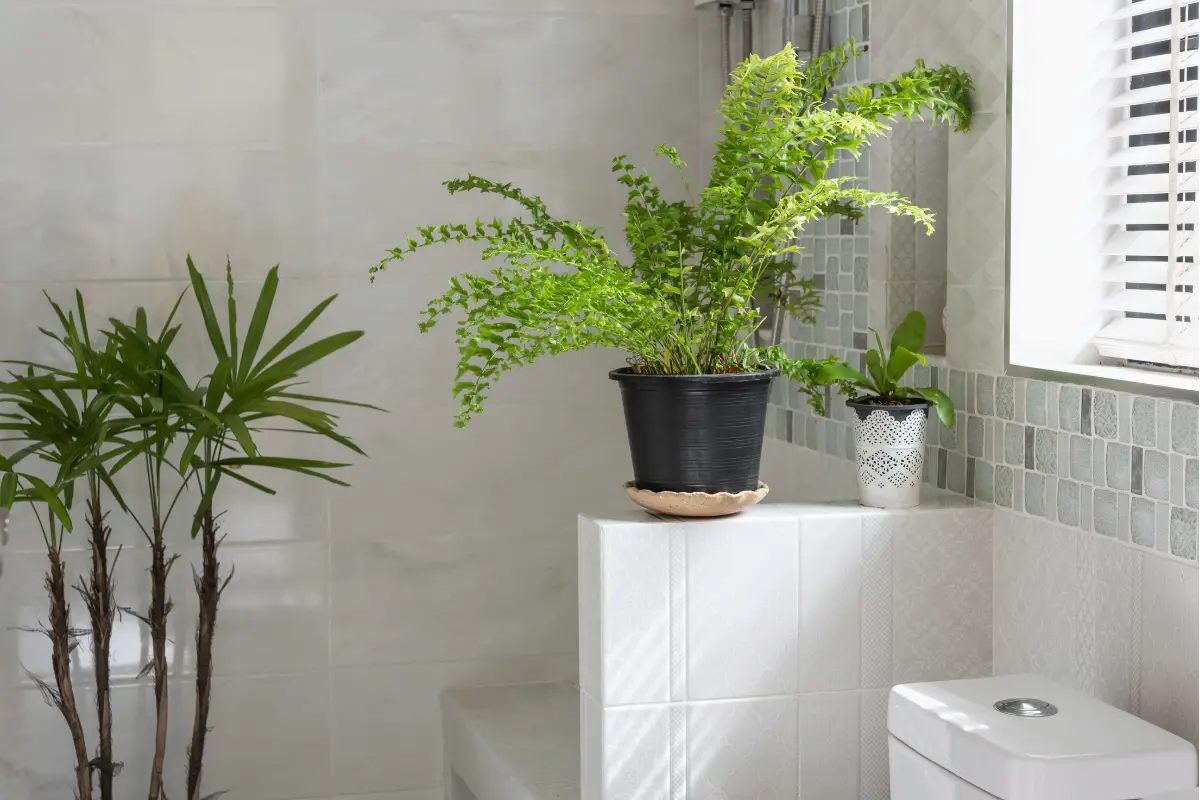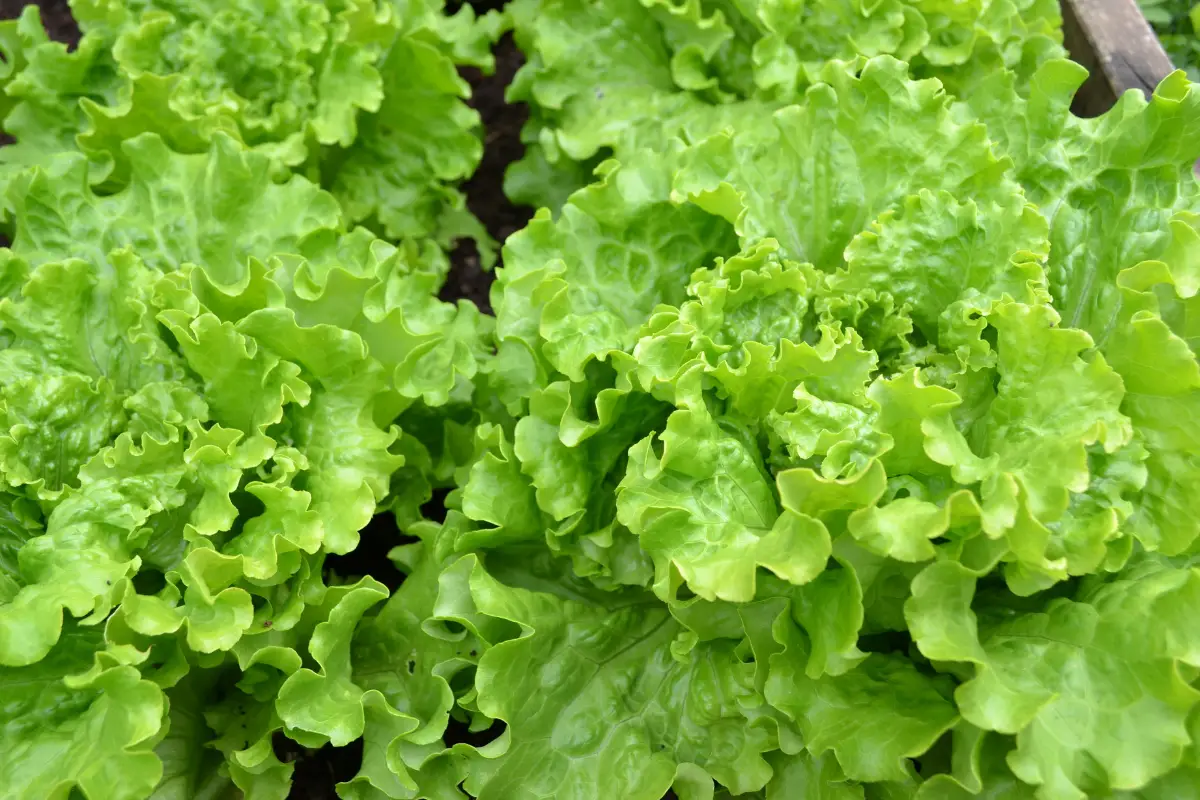A terrarium is a unique and beautiful way to bring the outdoors inside. It is a self-sustaining ecosystem that is easy to care for and provides a peaceful and calming environment.
Whether you are a seasoned gardener or just starting out, a terrarium is an excellent project to undertake.

Table of Contents
What is a Terrarium?
A terrarium is a closed environment that houses plants, soil, and other elements needed for the plants to grow and thrive. It is a low-maintenance way to create a miniature garden inside your home or office.
The closed environment creates a perfect environment for plants to grow, as it helps regulate temperature, humidity, and light.
Types of Terrariums
There are three main types of terrariums: open, closed, and semi-closed.
Open Terrariums
Open terrariums are the simplest type of terrarium. They consist of a clear container with plants and soil.
The open design allows air to circulate, making it ideal for plants that thrive in high humidity and air movement.
Closed Terrariums
Closed terrariums have a lid that seals the container. This creates a more controlled environment and helps regulate humidity levels.
Closed terrariums are ideal for plants that need a more controlled environment and require less water and air circulation.
Semi-Closed Terrariums
Semi-closed terrariums have a lid that is not completely sealed. This type of terrarium provides a balance between open and closed environments and is ideal for plants that require moderate humidity levels and air circulation.
Prices pulled from the Amazon Product Advertising API on:
Product prices and availability are accurate as of the date/time indicated and are subject to change. Any price and availability information displayed on [relevant Amazon Site(s), as applicable] at the time of purchase will apply to the purchase of this product.
Choosing the Right Plants for Your Terrarium
When choosing plants for your terrarium, consider their light, temperature, and humidity requirements.
Make sure to select plants that are compatible with each other and can thrive in the same environment. Some popular plants for terrariums include ferns, mosses, succulents, and air plants.
Setting Up Your Terrarium
Setting up a terrarium is a simple process that requires just a few steps.
- Choose a container: Pick a clear container that is large enough to house your plants.
- Add a layer of gravel: The first layer in the container should be a layer of gravel. This helps to improve drainage and prevent the soil from becoming waterlogged.
- Add soil: The next layer should be a layer of soil. Choose a soil that is appropriate for the type of plants you are growing.
- Add plants: Carefully place your plants in the soil and arrange them in a way that is aesthetically pleasing.
- Add decorations: Add any decorations, such as rocks or stones, to enhance the overall look of the terrarium.
- Add water: Once the terrarium is set up, add a small amount of water to the soil.
Caring for Your Terrarium
Caring for a terrarium is a simple process that requires minimal effort.
- Light: Make sure your terrarium receives adequate light. If necessary, use a grow light to provide additional light.
- Water: Add water to the soil as needed to keep the soil moist but not waterlogged. Avoid getting water on the leaves, as this can lead to mold and fungal growth.
- Temperature: Make sure the temperature inside the terrarium remains between 60 and 80 degrees Fahrenheit.
- Humidity: Keep the humidity levels inside the terrarium between 50 and 70 percent.
Conclusion
Starting a terrarium is a fun and rewarding project that can bring a touch of nature into your home. Whether you choose an open, closed, or semi-closed terrarium, the key to success is choosing the right plants and providing them with the proper care and environment.
With a little effort and attention, you can create a thriving and beautiful terrarium that will bring joy for years to come.
- How to Build a Planter Box for Bamboo: A Step-by-Step Guide

- Can Robotic Lawnmowers Handle Steep Slopes?

- Do You Need a Specific Lawn for a Robotic Lawnmower? Expert Advice

- Are Robotic Lawnmowers Safe for Pets and Children? Safety Features of Robotic Lawnmowers

- Why Use Robotic Lawnmowers? Advantages of Using a Robotic Lawnmower

- Is the GARDENA SILENO City 300 Cordless or Corded? A Clear Answer















